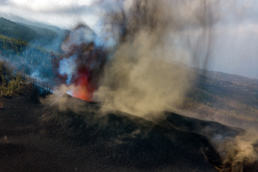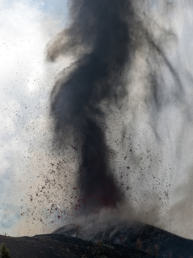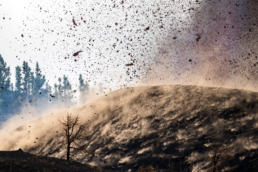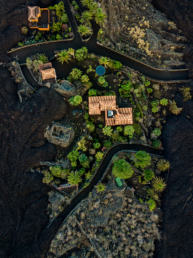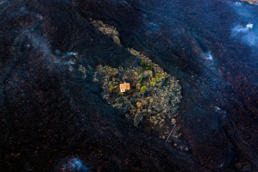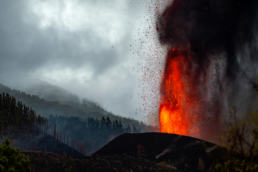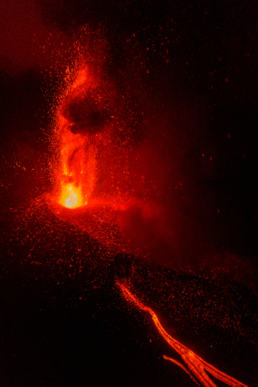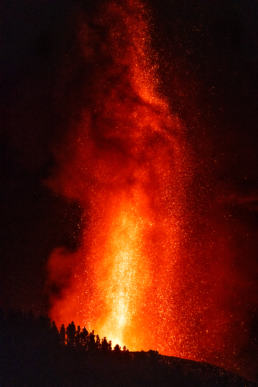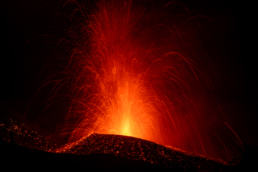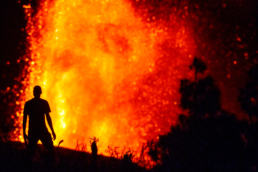I was monitoring earthquake activities at La Palma for some time and, as soon as fissures opened on the southern part of the area on September 19th, 2021, I booked the first flight to the Canary island.
I arrived roughly 24 hours after the first eruption: the pine wildfires had been extinguished and the magma found its way through one single crater which was already growing in heigh and magnitude. The area downstream the new volcano had been evacuated and residents hurried to save their belongings. A two kilometres safety area had been deployed and, despite the lava flow was slower and safer then the one in Iceland, it was impossible to get anywhere near it.
I made good use of super tele lenses and drone, but to be honest I was unimpressed by the eruption: under the bright Canary sun only a thick ash plume was visible, with sporadic explosions of pyroclastic material. That changed completely at dust, when the lava fountain finally appeared visible to the naked eye. It was a mesmerising show that enchanted locals and visitors alike, a show that I witnessed night after night for several days after.>
As spectacular as the volcano was, a haunting thought never abandoned the mind of us bystanders: many people lost everything due to the eruption, as the lava flow and the ash fall alike buried properties and houses. Nor once, despite what the media told, as a visitor I felt welcome by locals, which on the other hand deplored police show-off: ready to harass citizens who lost everything, they will be nowhere to be found once it is time to rebuild.

